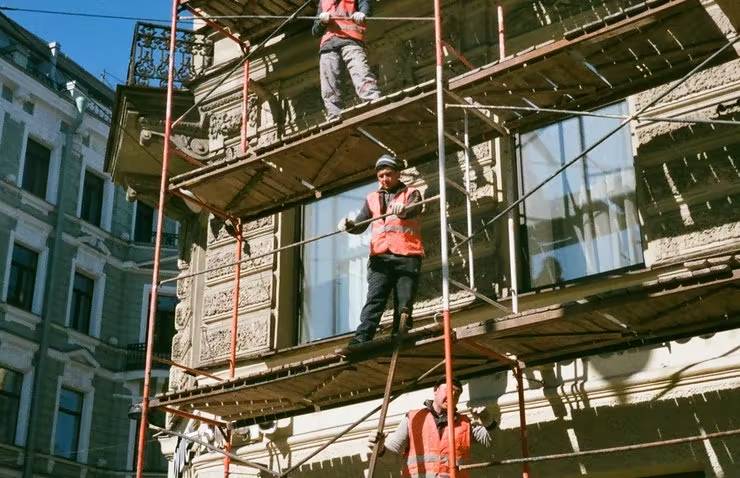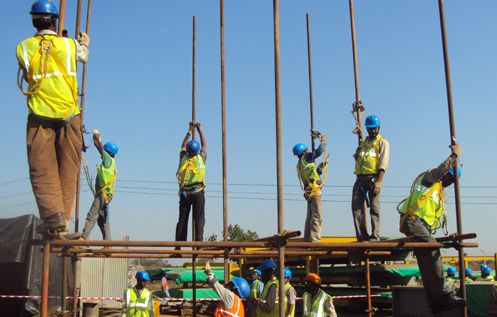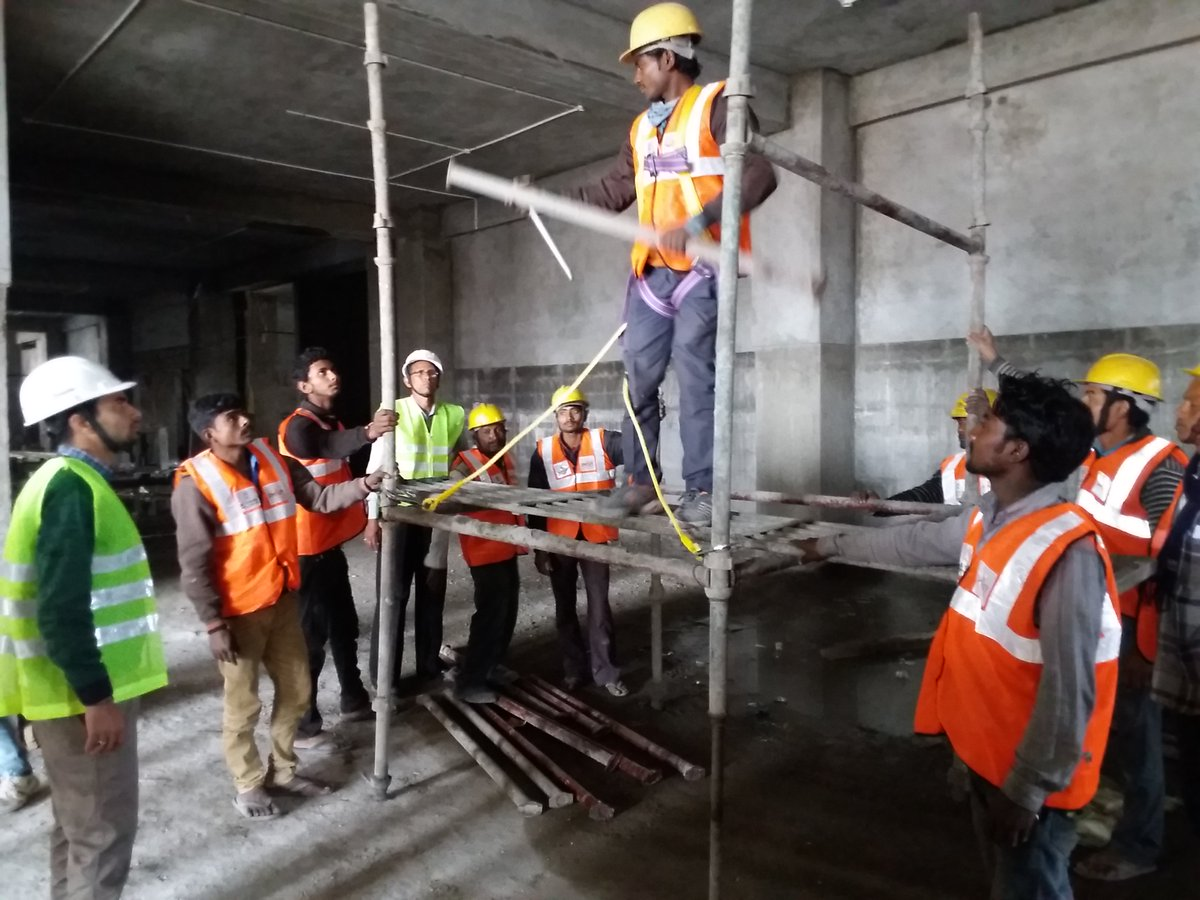Brick Mason (6 month course)
Brick Mason click here
Brief Job Description
Brick mason is required to perform routine masonry works such as brickwork, block work, laying paver
blocks ,plastering, brick bat cob waterproofing, random rubble masonry and IPS/Tremix flooring works
etc.
Personal Attributes
The brick mason is expected to be physically fit to work across various locations with varied environmental conditions. The person should be organized, diligent, methodical, safety-conscious, and a prompt decisionmaker. In addition to being a team player, the individual should have good communication skills.

Mark the layout for brick/block works
Description
This unit describes the skills and knowledge required to mark layout for brick/block works
Scope
The scope covers the following :
Carry out preparatory work for layout marking
Mark the layout for brick/block work
Elements and Performance Criteria
Carry out preparatory work for layout marking
To be competent, the user/individual on the job must be able to:
PC1. read and interpret the basic working drawings / sketches before the commencement of brick
/ block work
PC2. select required tools for the task and ensure they are in working condition
PC3. select appropriate Personal Protective Equipment (P.P.E.s) for the task
PC4. ensure work place is clear for marking the layout
PC5. set out the layouts as per sketches/drawings
PC6. identify and transfer required levels using appropriate tools
Mark the layout for brick/block work
To be competent, the user/individual on the job must be able to:
PC7. mark the centre lines of the rooms by setting perpendiculars using 3-4-5 method and check
right angle (90°)at corners
PC8. set out 90° corners using builders square or 3-4-5 method and check right angle
PC9. perform marking for acute angle, obtuse angle, splayed wall etc.
PC10. check the diagonals ensuring they are equal
Knowledge and Understanding (KU)
The individual on the job needs to know and understand:
KU1. standard practices of masonry works
KU2. safety rules and regulations for handling and storing relevant tools, equipment, and
materials required for relevant works in accordance with organizational norms
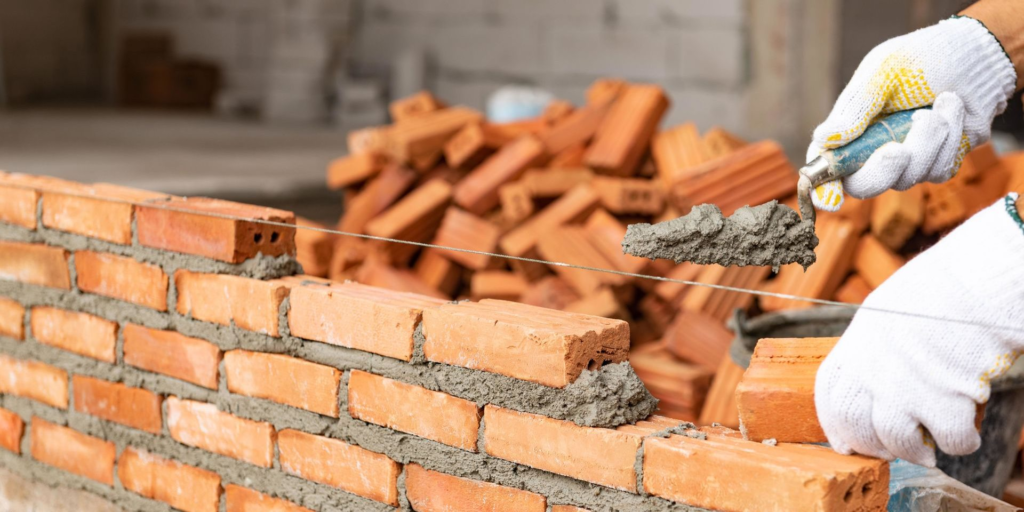
KU3. importance of personal protection including the use of related safety gears & equipment in
accordance with organizational norms
KU4. service request procedures for tools, materials and equipment as per organizational norms
KU5. procedure for maintenance of tools and equipment
KU6. basic principles of measurement
KU7. tools and equipment required for layout marking and earthwork, their use and maintenance
KU8. how to use the 3-4-5 method for squaring corners
KU9. standard practices for layout
KU10. layout sketches for foundation ,walls and other masonry units
Generic Skills (GS)
User/individual on the job needs to know how to:
GS1. write in at least one language, preferably in the local language of the site
GS2. read sketches/routine work drawings, instructions provided for the work, and various
signboards, safety rules, safety tags, exit route information in one or more languages,
preferably in the local language of the site
GS3. speak in one or more language, preferably one of the local language at the site
GS4. communicate orally and effectively with team members
GS5. analyze the safety aspect of the workplace
GS6. plan work and organize required resource effectively
GS7. complete work as per agreed time schedule and quality parameters
GS8. resolve any conflict within the teammates
GS9. evaluate the complexity of the tasks
GS10. identify any violation of safety norms during the work
Carry out brick laying work
Description
This unit describes the skills and knowledge required to carry out brick laying work
Scope
The scope covers the following :
Check material used for brickwork
Lay bricks for construction of load bearing / non-load bearing wall, columns and footings
Check the line, level and alignment
Carry out pointing in brick masonry
Perform specialized masonry works such as arches, staircase, manholes and walkways
Repair and restore brick masonry
Elements and Performance Criteria
• Check material used for brickwork
To be competent, the user/individual on the job must be able to:
PC1. ensure tools are in working condition
PC2. check visually for the quality of bricks / blocks prior to use
PC3. ensure fine aggregate is sieved as per grade requirement
PC4. ensure bricks are soaked prior to use
• Lay bricks for construction of load bearing / non-load bearing wall, columns and footings
To be competent, the user/individual on the job must be able to:
PC5. select appropriate tools and equipment as per the tasks at requirement such as: different
types of trowels (of the right blade size), masons hammer, blocking chisel, mashing hammer,
jointers etc.
PC6. break bricks to required shape and size using appropriate tools
PC7. estimate the quantity of raw material required
PC8. lay and fix bricks as per required bond within tolerance limit using appropriate mortar as per
applicability
PC9. check vertical and horizontal alignment using appropriate tools
PC10. maintain line and level of each course of brickwork using wooden / aluminum straight edge
sections
PC11. set out 90° corners using builders square or 3-4-5 method and check right angle
PC12. ensure proper curing of constructed masonry structure
Carry out pointing in brick masonry
To be competent, the user/individual on the job must be able to:
PC13. perform raking of joints as specified prior to drying of bonding mortar
PC14. ensure that joints are cleaned and surface is wet prior to pointing
PC15. ensure lime/cement mortar for pointing is prepared as per specification
PC16. fill joints with appropriate mortar to obtain specified type of pointing
PC17. carry out various types of pointing works as per specification using appropriate tools and
technique
PC18. ensure proper curing of pointing
Perform specialized masonry works such as arches, staircase, manholes, and walkways
To be competent, the user/individual on the job must be able to:
PC19. maintain set out of tread and riser of staircase as per drawing/instruction
PC20. ensure masonry works as per required bond, alignment and plumb
PC21. maintain bricks for manholes as per required line & level and providing channels and
benching
PC22. lay and fix paver blocks to designed pattern & finish the joints as specified
PC23. install anchors and ties for masonry arches
PC24. install arch masonry unit by laying and aligning as per specified bond
PC25. cut creepers around corners and full joints to obtain a flushed structure
PC26. ensure proper curing of constructed masonry structure
Repair and restore brick masonry
To be competent, the user/individual on the job must be able to:
PC27. remove deteriorated elements from masonry structures using tools such as saws drills and
chisels without causing damage to adjacent structure
PC28. reinstall bricks to match previous or existing work
PC29. perform proper pointing and raking of joint to obtain desired surface for exposed brick work
PC30. ensure proper bonding with old and new surface
Knowledge and Understanding (KU)
The individual on the job needs to know and understand:
KU1. standard practices for masonry work
KU2. safety rules and regulations for handling and storing relevant tools, equipment, and
materials required for relevant works in accordance with organizational norms
KU3. importance of personal protection including the use of related safety gears & equipment in
accordance with organizational norms
KU4. service request procedures for tools, materials and equipment as per organizational norms
KU5. procedure for maintenance of tools and equipment
KU6. sketches for building bricks structures
KU7. basic principles of measurement
KU8. standard specification of all masonry tools and equipment, their care and maintenance
KU9. Different types/grades of cement, aggregates and bricks including fly ash bricks and low
water absorbing bricks

KU10. English ,Flemish , stretcher & header bond
KU11. how to use basic leveling tools in the masonry trade such as: Spirit level, water level, plumb
bob, line thread etc.
KU12. how to select and use tools and equipment such as: Measuring tape, trowels, floats, brushes,
screed boards, straightedge, concrete mixer, mortar boards and stands, shovels,
wheelbarrows, hawks, joint rules, mason’s square, buckets, power leads, spade, volume box,
water measuring jug
KU13. how to determine vertical and horizontal alignment using appropriate tools to provide
vertical datum lines for building measurements
KU14. how to use the 3-4-5 method for squaring corners
KU15. various techniques / procedures for cutting/chiseling/dressing different types of bricks to
closure
KU16. how to lay and fix brick in position
KU17. size of gist and joints
KU18. cement mix proportion and its importance
KU19. water-cement ratio
KU20. method of curing of masonry structures
KU21. arch component & terminology
KU22. importance of proper joint spacing & gauging in arches
KU23. techniques for repairing & finishing
KU24. various types of pointing in brick masonry and its application including: flush pointing,
keyed/grooved pointing, recessed pointing, struck pointing
KU25. different mortar mix used for pointing
KU26. various pointing and raking tools and techniques and method of pointing a joint as per
specification
Generic Skills (GS)
User/individual on the job needs to know how to:
GS1. write in at least one language, preferably in the local language of the site
GS2. read sketches/routine work drawings, instructions provided for the work, and various
signboards, safety rules, safety tags, exit route information in one or more languages,
preferably in the local language of the site
GS3. speak in one or more language, preferably one of the local language at the site
GS4. communicate orally and effectively with team members
GS5. analyze the safety aspect of the workplace
GS6. plan work and organize required resource effectively
GS7. complete work as per agreed time schedule and quality parameters

GS8. resolve any conflict within the teammates
GS9. evaluate the complexity of the tasks
GS10. identify any violation of safety norms during the work
Carry out block laying work
Description
This unit describes the skills and knowledge required to construct various masonry structures using block
Scope
The scope covers the following :
Check material used for block work
Lay block for construction of wall
Repair and restore block masonry
Elements and Performance Criteria
Check material used for block work
To be competent, the user/individual on the job must be able to:
PC1. check visually the quality of blocks prior to use
PC2. ensure fine aggregate is sieved as per grade requirement
PC3. ensure blocks are soaked prior to use
Lay block for construction of wall
To be competent, the user/individual on the job must be able to:
PC4. select appropriate tools and equipment as per the tasks at requirement such as: different
types of trowels (of the right blade size), masons hammer, blocking chisel, mashing hammer,
jointers etc.
PC5. estimate the quantity of raw material required
PC6. lay and fix blocks as per specification within tolerance limit using appropriate mortar as per
applicability
PC7. lay and fix blocks with appropriate adhesives for thin joint masonry
PC8. maintain required level and specified slope for construction
PC9. check vertical and horizontal alignment using appropriate tools
PC10. maintain line and level of each course of brickwork using wooden / aluminum straight edge
sections
PC11. set out 90° corners using builders square or 3-4-5 method and check right angle
Repair and restore block masonry
To be competent, the user/individual on the job must be able to:
PC12. remove deteriorated elements from masonry structures using tools such as saw, drills and
chisels without causing damage to adjacent structure
PC13. reinstall block to match previous or existing work
PC14. ensure proper bonding with old and new surface
Knowledge and Understanding (KU)
The individual on the job needs to know and understand:
KU1. standard practices for masonry work
KU2. safety rules and regulations for handling and storing relevant tools, equipment, and
materials required for relevant works in accordance with organizational norms
KU3. importance of personal protection including the use of related safety gears & equipment in
accordance with organizational norms
KU4. service request procedures for tools, materials and equipment as per organizational norms
KU5. procedure for maintenance of tools and equipment
KU6. sketches for building block work structures
KU7. basic principles of measurement
KU8. standard specification of all masonry tools and equipment’s, their care and maintenance
KU9. type and size of raw materials required
KU10. how to use basic leveling tools in the masonry trade such as Spirit level, water level, plumb
bob, line thread etc.
KU11. how to select and use tools and equipment such as: Measuring tape, trowels, floats, brushes,
screed boards, straightedge, concrete mixer, mortarboards and stands, shovels,
wheelbarrows, hawks, joint rules, mason’s square, buckets, power leads, spade, volume box,
water measuring jug etc.
KU12. how to determine vertical and horizontal alignment using appropriate tools to provide
vertical datum lines for building measurements
KU13. how to use the 3-4-5 method for squaring corners
KU14. how to lay and fix blocks in position
KU15. thin joint masonry
KU16. cement mix proportion and its importance
KU17. various adhesives used in block work
KU18. water cement ratio
KU19. techniques for repairing & finishing
Generic Skills (GS)
User/individual on the job needs to know how to:
GS1. write in at least one language, preferably in the local language of the site
GS2. read sketches/routine work drawings, instructions provided for the work, and various
signboards, safety rules, safety tags, exit route information in one or more languages,
preferably in the local language of the site
GS3. speak in one or more language, preferably one of the local language at the site
GS4. communicate orally and effectively with team members
GS5. analyze the safety aspect of the workplace
GS6. plan work and organize required resource effectively
GS7. complete work as per agreed time schedule and quality parameters
GS8. resolve any conflict within the teammates
GS9. evaluate the complexity of the tasks
GS10. identify any violation of safety norms during the work
Work effectively in a team to deliver desired results at the workplace
Description
This unit describes the skills and knowledge required to work effectively within a team to achieve the
desired results
Scope
The scope covers the following :
Interact and communicate in an effective manner
Support co-workers to execute the project requirements
Practice inclusion
Elements and Performance Criteria
Interact and communicate in an effective manner
To be competent, the user/individual on the job must be able to:
PC1. pass on work related information/ requirement clearly to the team members
PC2. inform co-workers and superiors about any kind of deviations from work
PC3. report any unresolved problem to the supervisor immediately
PC4. obtain instructions from superiors and respond on the same
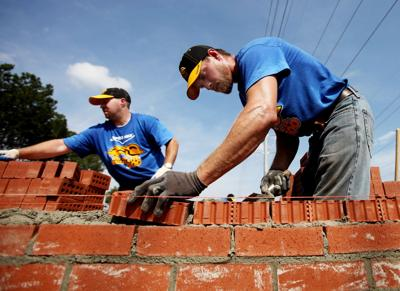
PC5. communicate to team members/subordinates for appropriate work technique and method
PC6. seek clarification and advice as per the requirement
Support co-workers to execute the project requirements
To be competent, the user/individual on the job must be able to:
PC7. hand over the required material, tools, tackles, equipment and work fronts timely to
interfacing teams
PC8. work together with co-workers in a synchronized manner
Practice inclusion
To be competent, the user/individual on the job must be able to:
PC9. maintain cultural inclusivity at work place
PC10. maintain disability friendly work practices
PC11. follow gender neutral practices at workplace
PC12. address discriminatory and offensive behavior in a professional manner as per
organizational policy
Knowledge and Understanding (KU)
The individual on the job needs to know and understand:
KU1. own roles and responsibilities
KU2. importance of effective communication
KU3. the consequence of poor teamwork on project outcomes, timelines, safety at the
construction site, etc.
KU4. different modes of communication used at workplace
KU5. importance of creating healthy and cooperative work environment among the gangs of
workers
KU6. different activities within the work area where interaction with other workers is required
KU7. applicable techniques of work, properties of materials used, tools and tackles used, safety
standards that co-workers might need as per the requirement
KU8. importance of proper and effective communication and the expected adverse effects in case
of failure relating to quality, timeliness, safety, risks at the construction project site
KU9. importance and need of supporting co-workers facing problems for the smooth functioning of
work
KU10. the fundamental concept of gender equality
KU11. how to recognize and be sensitive to issues of disability, culture and gender
KU12. legislation, policies, and procedures relating to gender sensitivity and cultural diversity
including their impact on the area of operation
Generic Skills (GS)
User/individual on the job needs to know how to:
GS1. write in at least one language, preferably in the local language of the site
GS2. read the communication regarding work completion, materials used, tools and tackles used,
the resource required, etc,
GS3. speak in one or more languages, preferably in one of the local language of the site
GS4. listen and follow instructions / communication shared by superiors/ co-workers regarding
team requirements or interfaces during work processes
GS5. communicate orally and effectively with co-workers considering their educational and social
background
GS6. decide on what information is to be shared with co-workers within the team or to the
interfacing gang of workers
GS7. plan work and organize the required resources in coordination with team members
GS8. complete all assigned task in coordination with team members
GS9. take initiative in resolving issues among co-workers or report the same to superiors
GS10. ensure best ways of coordination among team members
GS11. evaluate the complexity of task and determine if any guidance is required from superiors
Plan and organize work to meet expected outcomes
Description
This unit describes the knowledge and the skills required for an individual to plan and organize own work in order to meet expected outcome.
Scope
The scope covers the following :
Plan and prepare for work
Organise required resources as per work plan
Complete work as per the plan
Elements and Performance Criteria
Plan and prepare for work
To be competent, the user/individual on the job must be able to:
PC1. identify the targets and timelines set by superiors
PC2. determine the work requirements corresponding to
task(drawings/schedules/instructions/methodology), safety, tools and equipment prior to
commencement of task
PC3. plan the work by analyzing the required outcomes, work procedures, allotted time, resource
availability and known priorities
PC4. prepare the work areas in coordination with team members
PC5. plan for waste collection and disposal prior to and after completion of work
Organize required resources as per work plan
To be competent, the user/individual on the job must be able to:
PC6. arrange the required manpower prior to commencement of work
PC7. organize the required materials, tools and tackles required for the task
Complete work as per the plan
To be competent, the user/individual on the job must be able to:
PC8. engage allocated manpower in an appropriate manner
PC9. employ correct tools, tackles and equipment for the desired work
PC10. provide guidance to the subordinates to obtain desired outcome

PC11. use resources in an optimum manner to avoid any unnecessary wastage
PC12. use tools, tackles and equipment carefully to avoid damage
PC13. ensure the work processes adopted are in line with the specified standards and instructions
PC14. complete the work with the allocated resources within specified time
PC15. clean and organize the workplace after completion of task
Knowledge and Understanding (KU)
The individual on the job needs to know and understand:
KU1. importance of proper housekeeping including safe waste disposal
KU2. policies, procedures and work targets set by superiors
KU3. how to identify work activities that need to be planned and organized
KU4. how to determine the task requirements
KU5. how to determine the quality requirements related to the task
KU6. how to undertake all aspect of planning and organizing the task, including interpretation of
task, reading drawing/schedules, arranging resources, reporting problems etc.
KU7. how to implement the planned activities
KU8. how to use available resources in a judicious and appropriate manner to minimize wastages or
damage
Generic Skills (GS)
User/individual on the job needs to know how to:
GS1. write in one or more language, preferably the local language at the site
GS2. read communication from co-workers, superiors and notices from other departments as per
requirement of the level
GS3. speak in one or more language, preferably one of the local language at the site
GS4. follow communication shared by co-workers regarding standard work processes, resources
available, timelines, etc.
GS5. communicate effectively with co-workers and subordinates
GS6. decide on what sequence is to be adopted for execution of work
GS7. plan and organize the materials, tools, tackles and equipment required to execute the work
GS8. complete all assigned task with proper planning and organizing
GS9. analyze areas of work which could result in a delay of work, wastage of material or damage
to tools and tackles
GS10. evaluate potential solutions to minimize avoidable delays and wastages at the construction
site
Work according to personal health, safety and environment protocols at construction site
Description
This NOS covers the skill and knowledge required for an individual to work according to personal health,
safety and environmental protocols at construction site
Scope
The scope covers the following :
Follow safety norms as defined by organization
Adopt healthy & safe work practices
Implement good housekeeping and environment protection process and activities
Follow infection control guidelines as per applicability
Elements and Performance Criteria
Follow safety norms as defined by the organization
To be competent, the user/individual on the job must be able to:
PC1. identify and report any hazards, risks or breaches in site safety to the appropriate authority
PC2. follow emergency and evacuation procedures in case of accidents, fires, natural calamities
PC3. follow recommended safe practices in handling construction materials, including chemical
and hazardous material whenever applicable
PC4. follow all the protocols and safety techniques conveyed during safety awareness programs
like Tool Box Talks, safety demonstrations and mock drills conducted at the site
PC5. select and operate different types of fire extinguishers corresponding to various types of fires
as per EHS guideline
PC6. identify near miss, unsafe condition and unsafe act
Adopt healthy & safe work practices
To be competent, the user/individual on the job must be able to:
PC7. use appropriate Personal Protective Equipment (PPE) as per work requirements for : Head
Protection, Ear protection, Fall Protection ,Foot Protection, Face and Eye Protection, Hand
and Body Protection , and Respiratory Protection (if required)
PC8. handle all required tools, tackles, materials and equipment safely
PC9. follow safe disposal of waste, harmful and hazardous materials as per EHS guidelines
PC10. check and install all safety equipment as per standard guidelines
PC11. follow safety protocols and practices as laid down by site EHS department
PC12. obtain “height pass” clearance for working at heights
Implement good housekeeping practices
To be competent, the user/individual on the job must be able to:
PC13. collect, segregate and deposit construction waste into appropriate containers based on their
toxicity or hazardous nature
PC14. apply ergonomic principles wherever required
Follow infection control guidelines as per applicability
To be competent, the user/individual on the job must be able to:
PC15. follow recommended personal hygiene, workplace hygiene and sanitization practices
PC16. clean and disinfect all materials, tools and supplies before and after use
PC17. report immediately to concerned authorities regarding signs and symptoms of illness of self
and others
Knowledge and Understanding (KU)
The individual on the job needs to know and understand:
KU1. reporting procedures in cases of breaches or hazards for site safety, accidents, and
emergency situations as per guidelines
KU2. types of safety hazards at construction sites
KU3. basic ergonomic principles as per applicability
KU4. the procedure for responding to accidents and other emergencies at site
KU5. use of appropriate personal protective equipment based on various working conditions
KU6. importance of handling tools, equipment, and materials as per applicable norms
KU7. effect of construction material on health and environments as per applicability
KU8. various environmental protection methods as per applicability
KU9. storage of waste including non-combustible scrap material and debris, combustible scrap
material and debris, general construction waste and trash (non-toxic, non-hazardous), any
other hazardous wastes and any other flammable wastes at the appropriate location
KU10. how to keep the workplace neat and tidy so as to be safe
KU11. how to use hazardous material in a safe and appropriate manner as per applicability
KU12. types of fire
KU13. procedure of operating different types of fire extinguishers
KU14. safety relevant to tools, tackles, and equipment as per applicability
KU15. housekeeping activities relevant to task
KU16. ways of transmission of infection
KU17. ways to manage infectious risks at the workplace
KU18. different methods of cleaning, disinfection, sterilization, and sanitization
KU19. symptoms of infection like fever, cough, redness, swelling, and inflammation
Generic Skills (GS)
User/individual on the job needs to know how to:
GS1. write in at least one language, preferably in the local language of the site
GS2. fill safety formats for near miss, unsafe conditions and safety suggestions
GS3. read in one or more language, preferably in the local language of the site
GS4. speak in one or more language, preferably in one of the local language of the site
GS5. listen to instructions/communication shared by site EHS and superiors regarding site safety,
and conducting the toolbox talk
GS6. identify potential safety risks and report to the appropriate authority
GS7. assess and analyze areas which may affect health, safety and environment protocol on the
site
Carry out brick bat cob waterproofing
Description
This unit describes the skills and knowledge required to carry out work for the brick bat coba waterproofing
Scope
The scope covers the following :
Carry out brick bat coba waterproofing
Elements and Performance Criteria
• Carry out brick bat coba waterproofing
To be competent, the user/individual on the job must be able to:
PC1. clean and wash the surface to be water proofed
PC2. ensure bricks are soaked overnight prior to laying a course
PC3. ensure all non-structural gaps are filled prior to laying brick bat course
PC4. identify and transfer required levels using appropriate tools
PC5. prepare a cement mortar of appropriate ratio adding waterproofing admixtures
PC6. apply and spread an even thickness of mortar on the surface
PC7. lay brick bat on the prepared mortar ensuring proper placement and uniform gaps between
bricks
PC8. check horizontal and vertical alignment using appropriate tools
PC9. fill all gaps in brick bat using cement mortar
PC10. finish the top surface smooth with cement mortar prepared in specified proportion along with
admixtures
PC11. mark and transfer required levels at a regular interval in order to maintain proper slope of
finished surface in case of horizontal surface
Knowledge and Understanding (KU)
The individual on the job needs to know and understand:
KU1. standard practices for waterproofing works
KU2. safety rules and regulations for handling and storing relevant tools, equipment, and materials
required for relevant works in accordance with organizational norms
KU3. importance of personal protection including the use of related safety gears & equipment in
accordance with organizational norms
KU4. service request procedures for tools, materials and equipment as per organizational norms
KU5. procedure for maintenance of tools and equipment
KU6. preparation of the surface before the waterproofing
KU7. usage of various tools and equipment as per the waterproofing requirements of the surface
such as: trowels, rollers, brushes, angle grinders, shovels, wheelbarrows, knives or cutting
blades, hammers, brooms, vacuum cleaner etc.
KU8. procedure of laying brick bat coba waterproofing course
KU9. checks for water leakages
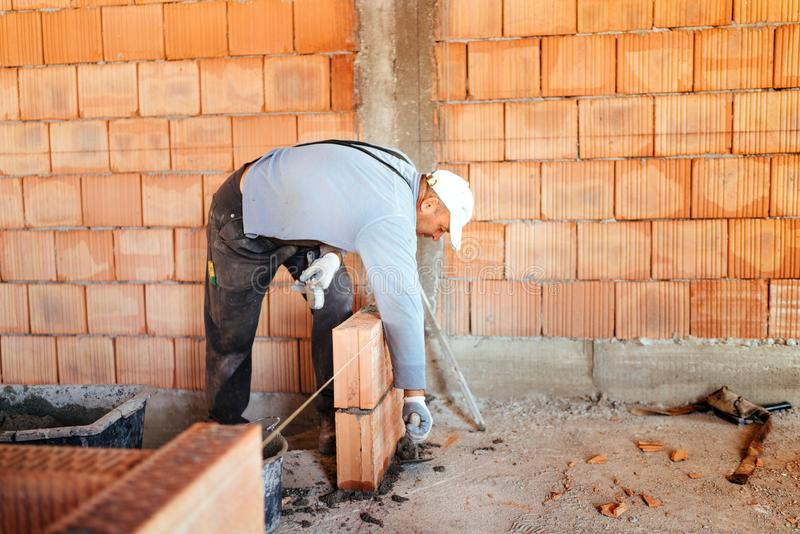
Generic Skills (GS)
User/individual on the job needs to know how to:
GS1. write in at least one language, preferably in the local language of the site
GS2. read sketches/routine work drawings, instructions provided for the work, and various
signboards, safety rules, safety tags, exit route information in one or more languages,
preferably in the local language of the site
GS3. speak in one or more language, preferably one of the local language at the site
GS4. communicate orally and effectively with team members
GS5. analyze the safety aspect of the workplace
GS6. plan work and organize required resource effectively
GS7. complete work as per agreed time schedule and quality parameters
GS8. resolve any conflict within the teammates
GS9. evaluate the complexity of the tasks
GS10. identify any violation of safety norms during the work
Carry out IPS (Indian Patent Stone) flooring
Description
This unit describes the skills and knowledge required to work on IPS flooring
Scope
The scope covers the following :
Carry out preparatory work prior to IPS flooring
Check for line, level, and alignment
Check the materials used for IPS flooring in case of manual mixing
Check the materials used for IPS flooring in case of machine mixing
Carry out IPS flooring
Elements and Performance Criteria
Carry out preparatory work prior to IPS flooring
To be competent, the user/individual on the job must be able to:
PC1. inspect the work area prior to concreting, ensure leveling in case of any undulations
observed on the surface prior to concreting
PC2. ensure surface is prepared appropriately and report any deviation in slope and alignment in PCC
PC3. report any gaps in formwork to avoid leakage
PC4. report any misalignment in formwork/reinforcement and ensure proper cover for
reinforcement is provided
Check for line, level and alignment
To be competent, the user/individual on the job must be able to:
PC5. mark reference level on the wall &transfer this marking to all floor locations using
appropriate tools
PC6. mark flooring thickness level and provide dummy level dots at specified intervals for
ensuring required slope
Check the materials used for IPS flooring in case of manual mixing
To be competent, the user/individual on the job must be able to:
PC7. check the grade of cement prior to use in case of manual mixing
PC8. ensure fine aggregate is sieved as per grade requirement
PC9. check that concrete is mixed in appropriate proportion
Check the materials used for IPS flooring in case of machine mixing
To be competent, the user/individual on the job must be able to:
PC10. check visually the concrete mix for usability and workability and notify superiors of the same
PC11. ensure specified concrete mix is used at allocated location
PC12. check that panels prepared are of specified size and type
Carry out IPS flooring
To be competent, the user/individual on the job must be able to:
PC13. fix the glass, aluminum or brass strip in cement mortar with their tops at appropriate level
and according to slope
PC14. ensure panels are made as per specified size
PC15. ensure concrete is poured in alternate panels/specified panels as per requirement
PC16. remove excess cement slurry and any marks on the surface
PC17. level the concrete surface with a straight edge and to the required finish with a wooden float
/ trowel
PC18. spread cement punning over the IPS concrete for smooth finish surface and allow it to soak
into the concrete, as per requirement
PC19. provide construction joints and expansion joints as per requirement
PC20. carry out levelling of the poured concrete to the specified levels maintaining the required
slope
PC21. ensure curing of the finished floor surface for the specified time
Knowledge and Understanding (KU)
The individual on the job needs to know and understand:
KU1. standard practices for IPS flooring
KU2. safety rules and regulations for handling and storing relevant tools, equipment, and
materials required for relevant works in accordance with organizational norms
KU3. importance of personal protection including the use of related safety gears & equipment in
accordance with organizational norms
KU4. service request procedures for tools, materials and equipment as per organizational norms
KU5. procedure for maintenance of tools and equipment
KU6. process to prepare the sub-base by watering and ramming
KU7. how to provide adequate slope in PCC (Plain Cement Concrete) in a base course
KU8. how to make reference levels and transfer the markings to all locations where flooring is to
be done
KU9. various types and grades of cement used, effect of water /cement ratio and type of
aggregates
KU10. different mix proportion/grade of concrete
KU11. sequence of concrete pouring and placing
KU12. manual mixing of concrete and nominal mix proportions
KU13. different reinforcement cover with respect to the size of the reinforcement bar
KU14. how to pour of concrete in alternate panels
KU15. how to avoid shrinkage cracks in concrete
KU16. various admixtures used in concreting
KU17. different types of vibrators, their influence area and use
KU18. construction and expansion joints
KU19. cutting tools for providing joints
KU20. final toweling process before the concrete is hardened
Generic Skills (GS)
User/individual on the job needs to know how to:
GS1. write in at least one language, preferably in the local language of the site
GS2. read sketches/routine work drawings, instructions provided for the work, and various
signboards, safety rules, safety tags, exit route information in one or more languages,
preferably in the local language of the site
GS3. speak in one or more language, preferably one of the local language at the site
GS4. communicate orally and effectively with team members
GS5. analyze the safety aspect of the workplace
GS6. plan work and organize required resource effectively
GS7. complete work as per agreed time schedule and quality parameters
GS8. resolve any conflict within the teammates
GS9. evaluate the complexity of the tasks
GS10. identify any violation of safety norms during the work
Apply plaster on internal & external surfaces of masonry & RCC structure
Description
This unit describes the skills and knowledge required for plastering on internal and external surfaces of
Masonry & RCC structures
Scope
The scope covers the following :
Carry out preparatory work before starting the plastering work
Check material used for plastering
Plaster internal & external masonry & RCC structures
Check for line, level & alignment
Elements and Performance Criteria
Carry out preparatory work before starting the plastering work
To be competent, the user/individual on the job must be able to:
PC1. read sketches for plastering work
PC2. select correct materials, tools, tackles and equipment for plastering
PC3. ensure that surface receiving plaster is prepared appropriately
PC4. set layouts as per the specification prior to start of plastering work
PC5. produce appropriate levels and make any grooves or lines on the surface as instructed
Check material used for plastering
To be competent, the user/individual on the job must be able to:
PC6. ensure sieving of fine aggregate as per grade requirement
PC7. check the quality of surface to be plastered
PC8. check for quality and consistency of cement mortar mix
Plaster internal & external masonry & RCC structures
To be competent, the user/individual on the job must be able to:
PC9. ensure that the correct tools and equipment are selected for plastering work as per
requirement
PC10. moisten surface sufficiently before starting of the plastering work
PC11. ensure that cement mortar is mixed in specified proportion including additives if any
PC12. apply cement slurry on receiving surface uniformly
PC13. apply the plastering mix of specified thickness on the surface
PC14. finish the surface by using correct tools as per the required finish
PC15. check for horizontal & vertical alignment during and after plastering
Check for line , level & alignment
To be competent, the user/individual on the job must be able to
PC16. check for vertical and horizontal alignment using appropriate tools
PC17. check for slope or maintain falls of the floor
PC18. check for right angle at corner if required
Knowledge and Understanding (KU)
The individual on the job needs to know and understand:
KU1. standard practices for plastering works
KU2. safety rules and regulations for handling and storing relevant tools, equipment, and
materials required for relevant works in accordance with organizational norms
KU3. importance of personal protection including the use of related safety gears & equipment in
accordance with organizational norms
KU4. service request procedures for tools, materials and equipment as per organizational norms
KU5. procedure for maintenance of tools and equipment
KU6. sketches for all plastering work
KU7. basic principles of measurement
KU8. standard specification of all masonry tools and equipments ,their care and maintenance
KU9. how to use basic leveling tools in the masonry trade such as: Spirit level, water level plumb
bob, line thread
KU10. how to select and use tools and equipments such as: Finishing Trowel, Plastering Corner
Trowel, Plastering Trowels, Pre-worn permashape etc. Plasters Hawk, Plastering Float,
Plastering Feather edges, Plastering Derbies Plastering Joint Knives and Spreaders, Plastering
Sanders and Sheets Measuring tape/rule, floats, brushes, straight edge, shovels,
wheelbarrows, hawks, square, buckets, spade, volume box, measuring can
KU11. gradation of sand for internal plasters
KU12. how to determine vertical and horizontal alignment using plumb bob to provide vertical
datum lines for building measurements
KU13. how to continuously monitor the alignment of the plastering on the brick / block work using
leveling tools
KU14. different types of plasters such as sand faced plaster, rough cast plaster pebbled cast
plaster, smooth cast plaster
KU15. methods and techniques for plastering internal and external masonry and RCC structures
KU16. various mix proportion to be used and thickness of plastering to be done on internal and
external surfaces
Generic Skills (GS)
User/individual on the job needs to know how to:
GS1. write in at least one language, preferably in the local language of the site
GS2. read sketches/routine work drawings, instructions provided for the work, and various
signboards, safety rules, safety tags, exit route information in one or more languages,
preferably in the local language of the site



